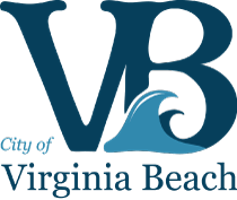Maryland Uses Energy Efficiency Management to Save
It may be a small state, but Maryland still represents a lot of territory with a complex governmental energy infrastructure involving 124 utility vendors, 58 state agencies, and over 120 Accounts Payable offices. With a decentralized bill pay process, just getting a handle on the state government’s energy use and cost is a challenge. The EmPOWER Maryland Energy Efficiency Act of 2008 sets per capita targets for reducing state electricity use. Using a 2007 baseline, the Act requires a 15 percent reduction in electricity use and peak demand by the year 2015. Seeking to lead by example, the state government is on track to meet that goal internally, thanks to interdepartmental communication, competition, and the collaboration of a third party utility bill auditing and analysis team.
Saving Energy by Using the Right System for Energy Efficiency
The EmPOWER Maryland Energy Efficiency Act of 2008, signed by Governor Martin O’Malley, was a statewide progressive call to action on climate change and energy efficiency. By setting the goal of a 15 percent per capita reduction in electricity use and demand by the target year of 2015, and by placing the burden of compliance on the shoulders of electric utilities, the state government committed itself to energy measurement, monitoring, and management. As Governor O’Malley is fond of saying, “The things that get measured are the things that get done.”
The challenge presented by the legislated energy reduction goal was two-fold: how to get the data necessary to evaluate progress toward achieving the energy reduction goal, and how to incentivize energy stakeholders to develop and implement the necessary programs and processes.
The Maryland Energy Administration (MEA) has been instrumental in developing and funding energy efficiency initiatives across the state. The MEA mission and outreach is broad and deep, including oversight and review of the performance and plans of the state’s electric utilities.
But internally, the state government has another organizational tool to address its energy management issues and to meet Governor O’Malley’s challenge to lead by example—the Department of General Services (DGS) Office of Energy Performance and Conservation (“Energy Office” for short).
The DGS Energy Office coordinates a number of tasks relating to the State’s energy initiatives including:
- development of energy savings programs
- oversight of Energy Performance Contracts
- coordination of the State’s renewable energy portfolio
- purchases of deregulated commodities for State entities
- review and analysis of energy data to identify inefficiencies and opportunities
The Solution
In 2008, the year that the Maryland legislature passed the EmPOWER Maryland Act, the State acquired EnergyCAP UtilityManagement™ (also referred to as the State Energy Database) through a competitive solicitation.
DGS Secretary Alvin Collins says holding state government accountable is key to making significant progress: “The State Energy Database gives us a clearer picture of where energy improvements need to be made and allows us to identify where energy and taxpayer dollars are being saved. It’s a very effective tool in helping achieve Governor O’Malley’s aggressive climate and energy goals.”
State Agency Energy Competition.
One of those tasks was to increase energy awareness among state employees, and to motivate them to conserve. Beginning in 2011, StateStat, Maryland’s Open Data portal, helped to establish an energy/electricity reduction competition between State agencies, whereby each agency’s consumption of electricity and total energy from “significant facilities” is being monitored and compared to the FY08 baseline. Significant facilities are those that have been occupied by the State since 2008 and are air-conditioned. The annual monitoring period for the competition is the previous fiscal year (FY 2013 is July 2012–June 2013) and the overall reduction goal from the 2008 start date is 15% by 2015. Not only did the competition motivate departmental employees directly involved, but it served as an example to other agencies and the general public when the Department of General Services took the competition online on its website. In February of 2014, Governor O’Malley joined DGS Secretary Collins in presenting the first-ever Maryland Energy CUP Awards to the overall winner of the 16-agency competition. He also recognized other agencies achieving significant energy efficiency milestones. By publicly recognizing the top energy performers, the governor and staff hope to encourage State agencies to build on the progress being made.
DGS manages the utility data that drives the competition. Soontornsaratool uses the Groups and Benchmarking feature in EnergyCAP UtilityManagement to monitor competition progress: “In order to see where each agency stands, we look at performance in 2008 baseline year and then compare the latest fiscal year to that to see the percentage of reduction.”
Soontornsaratool continued: “The Group is a way for us to put those facilities that each agency is competing in one place and use that as a filter. For example, if I want the total MMBTU for DGS for FY13 for the competing facilities, I can run an AN02 [analysis] report and filter it with the group DGS-competition. I then do the comparison with 2008 numbers to arrive at the reduction as a percentage. The database was extremely helpful in those calculations.”
Data Transparency.
Making energy data available is an important element in achieving energy reduction. Soontornsaratool agrees that transparency is important: “We have a public-facing database, which I think is something especially unique about the State of Maryland. We committed to increased transparency in government—part of the EmPower Maryland Initiative—and followed up by launching a public-facing database in 2008. The general public can track our progress towards the goal through this resource and hold the State accountable for its energy usage.”
Performance Contracting.
Accurate energy data is essential for measurement and verification of Maryland’s performance contracts with third party providers. As of December, 2013, twenty-one Energy Performance Contracts (EPCs) were saving $21.3 million annually with estimated total savings of $310 million throughout the life of the contracts. According to Lionel Hill, Chief of Energy Records & Verification at Maryland Department of General Services, EnergyCAP UtilityManagement is used to develop an energy baseline for each contract, and to track use and cost to validate savings. Hill uses the software to obtain energy use, demand, cost, and energy use intensity over a two-year period. Said Hill, “We rely heavily on EnergyCAP to prepare energy baselines for our projects.”
Bill Auditing And Analysis.
The State of Maryland has a longstanding relationship with BITHENERGY, a division of BITHGROUP Technologies, an IT services provider with head offices in Baltimore. Maryland contracts with BITHENERGY for utility bill data processing, analysis, and quality assurance.
Because of the complexities and size of state government operations, utility bills are not processed centrally. Instead, they are routed to each of 58 state agencies for preliminary analysis and payment.
Concurrently, the utility vendors also provide the utility billing data to BITHENERGY, which subjects each bill to rigorous consistency checks, including multiple tests based on the billing history using EnergyCAP UtilityManagement’s built-in audit features. The software compares use and cost with the previous month, as well as the corresponding month in the previous year. There are audit checks for overlapping bills, multiple bills in the same billing cycle, cost per day, and unit cost. Suspect bills are flagged, and email notifications are automatically sent to department energy coordinators and staff at the Energy Office. Biweekly meetings between BITHENERGY representatives, Soontornsaratool, and other DGS Energy Office staff help ensure that all stakeholders are informed about current energy issues. This enables them to act quickly to correct any problem situations and/or resolve billing questions in a timely manner.
BITHENERGY also provides the Energy Office with manual and automated reports including a monthly project report with year-to-year comparisons, a cost summary by fiscal year, number of bills processed, missing bills, and any other needed energy metrics.
Deregulated Commodity Purchasing.
Maryland DGS has purchased deregulated natural gas since 1997, and deregulated electricity since 2002, for all state agencies. In today’s deregulated energy market, with the comprehensive bill history provided by the State Energy Database, DGS is able to leverage the State’s buying power to secure the most competitive rates. The State purchases electricity for several thousand of its smaller accounts through periodic online reverse auctions. In 2011, DGS awarded $92 million in fixed rate commodity contracts for 478 gigawatt hours of electricity annually. For major accounts, about 1000 gigawatt hours, DGS employs a block and index pricing structure. Natural gas is purchased in a similar manner for smaller and major accounts.
EnergyCAP UtilityManagement provides convenient access to the summary and granular data necessary to secure the most competitive bids and render cost-saving purchasing decisions. The software helped DGS to document Fiscal Year 2013 taxpayer savings of $9.6 million for block and index electricity purchases, vs. a fixed price rate. For natural gas, block and index purchases yielded $7.1 million savings over a fixed rate.
Demand Response.
Several major state-related institutions are currently involved in demand response programs with PJM, the regional electric grid operator. According to Lionel Hill, EnergyCAP UtilityManagement is essential for accessing detailed records necessary for the State to make appropriate demand response decisions. Participants include Maryland’s DGS, Towson University, University of Maryland Baltimore, Maryland Aviation Administration, University of Maryland College Park, University of Maryland Baltimore County, Maryland Department of Veterans Affairs and the Maryland Stadium Authority. The DGS West Preston Street Complex alone has received about $972,879 in net payments since 2008 for their participation in the demand response program.
Getting Organized.
BITHENERGY’s detailed analysis brought to light a number of state energy accounts with lingering questions about which entities were responsible for bill payments. Some agreements with municipalities going back for decades were not being observed consistently, resulting in confusion and a lack of accountability and responsibility. Those situations are being resolved. Maryland also got a $91,000 reimbursement from the PEPCO utility provider for errors made in electronic bill payment procedures where the utility was assessing the State Highway Association for state taxes. The money had been sitting in a PEPCO account until the BITHENERGY audits picked up the discrepancy.
Maryland has Realized Considerable Time and Financial Savings by Improving Their Energy Management System
The State of Maryland provides a valuable illustration of the institutional challenges and possibilities posed by executive and legislative energy policies. Managing and communicating energy information plays a key role in achieving energy reduction goals. Centralized data management enables communications improvements. Non-state actors (a.k.a. BITHENERGY) can provide valuable expertise. A professional energy management software tool has been very important in the development of a coordinated state government response to the EmPOWER Maryland Energy Efficiency Act of 2008.
Acknowledgement
We wish to thank Emily Hunter Soontornsaratool, Energy Data Program Manager for the Maryland Department of General Services (DGS), for her assistance in developing this case study. Additional support was provided by Corey Culbreath and Alicia Singleton from BITHENERGY, a technology service company that provides utility bill data processing, analysis, and quality assurance to the State of Maryland. We also wish to recognize DGS staff for their support, including DGS Secretary Alvin Collins, Director of Energy and Engineering Lauren Buckler, M&V Specialist Ghadir Sara, Chief of Energy Records and Verification Lionel Hill, and the DGS Energy Engineering team.











